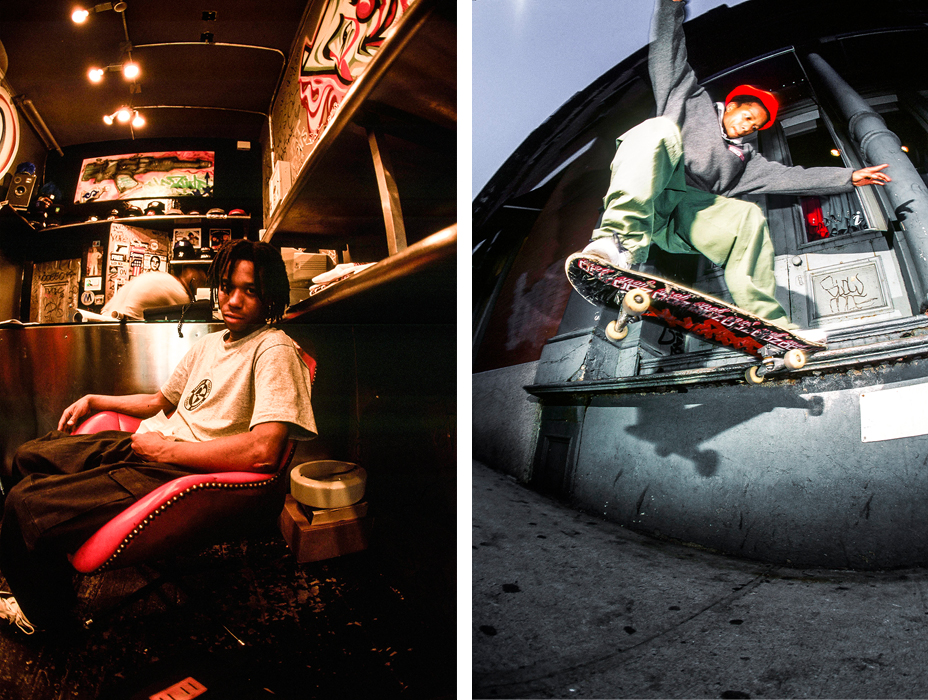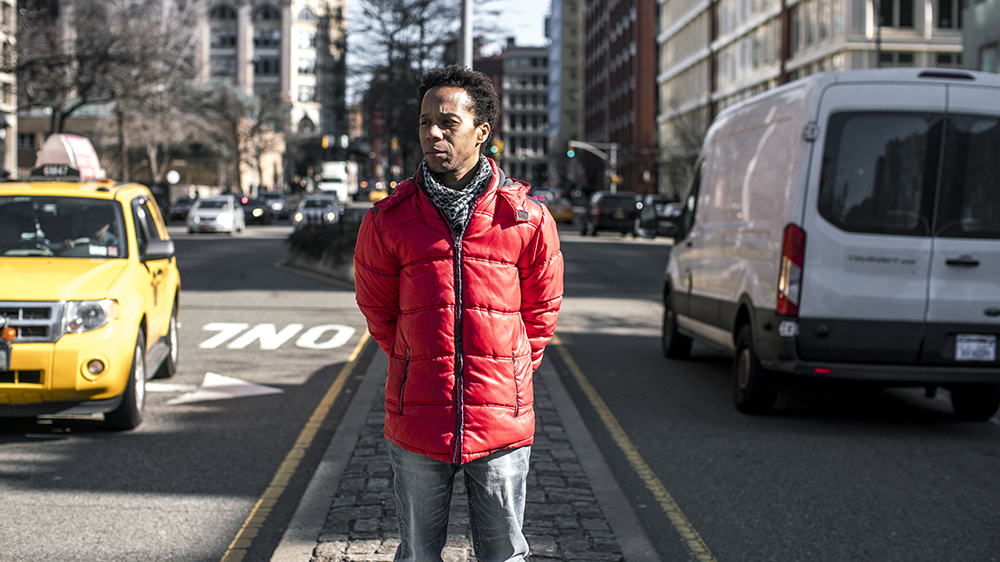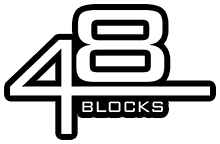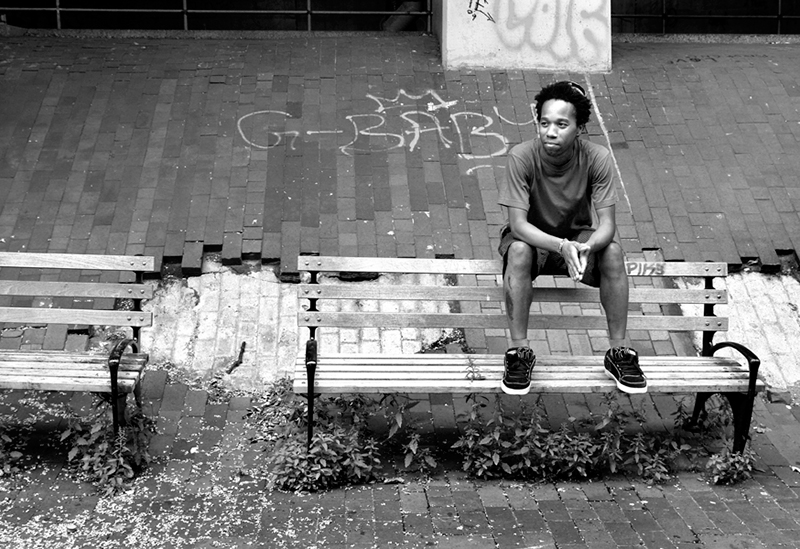Hamilton Harris is a native New Yorker that was cast as himself in Larry Clark and Harmony Korine’s cult-classic film Kids (1995). He’s responsible for teaching a generation of people how to roll a blunt by illustrating the proper technique on the big screen in the pre-Internet era. 20 years later, Ham is spearheading the production of a documentary about the community surrounding the iconic film—which hit its goal for initial funding on Kickstarter this past September. Given that, we wanted to catch up with him and find out how the project got started, where its at now, and what it was like to be a part of such a celebrated piece of pop culture.
How did you get cast in the movie Kids?
It’s interesting because I played myself—so I was written into the script. I still went to the casting, but I was written into the script because I was around at the time.
What was it like being a part of a film production at such a young age?
It was kind of surreal. Larry [Clark] and Harmony [Korine] had been talking about that film years prior. I was already aware of it, but in ’94 it actually became a reality. When we were called to film the scene in Washington Square Park, it was like. “Wow, it’s going down.” It didn’t hit me until I lit the blunt. Once I lit the blunt and took a few pulls… the weed was real—they wanted to use prop weed to avoid a lawsuit, but I really smoke weed, so I felt like I couldn’t fake being high. I told them that I wasn’t rolling up any fake weed and smoking it. So, Larry came back in a matter of minutes with a sack of real weed and told me that I had to do it in one take. So, we did the scene—I rolled the blunt, lit it, and blew some smoke out of my nose. Once the high kicked in, it was like, “Oh shit, we’re on a movie set!” That was the moment where it all became real.

Hamilton Harris in the ’90s. Film slides by SDJ.
That scene taught a lot of people how to roll blunts because it showed the step by step process of how to do it. Was that written into the script like that, or was it improvisational?
They wrote it that way. It’s interesting, because it didn’t really hit me until years later that what I did really explained how to roll up a blunt. At that time, a lot of people probably weren’t even aware of what a blunt is. I was oblivious to that. I thought that everyone knew how to roll a blunt.
How old were you when Kids was made?
I was 20.
So, at just 20 years old you were in this critically acclaimed film. What was life like after that?
At the time, I was a skater—that was my life. I wasn’t focused on making movies and stuff like that. I just wanted to skate. Also, being thrust into the spotlight kind of made me more introverted than I already was. Something felt unnatural about it. I wasn’t in the right frame of mind to handle the magnitude of what I was a part of. I needed to retreat and take a step back. Since I always skated, I just thrust myself into that. Skating was very competitive. By nature, I’m not a competitive person. All of the cats that I grew up with were going pro and had all of these opportunities. I had those opportunities as well, but I was missing something within myself. I realized that I wasn’t ready for the fame and everything that was happening surrounding the film and skateboarding. I really had to be honest with myself and pull back from everything.
So what was that process like—what did you do to find yourself?
I started getting into martial arts, yoga, and things like that. The meditative part of that really helped me become at peace with myself. I needed my own inner peace—so that helped me with that. At the same time, it helped me skate better. My focus was better, and my body felt more clean—and I felt more agile. I wasn’t so focused on what was going on around me, I was more focussed on myself.
You were skating for Zoo York at that time, right?
Yes.
What was it like being a part of the early Zoo that really helped define that era that Kids embodies.
That was ill. Rodney Smith was one of the co-owners of SHUT from ’86 to, like, ’91. He started Zoo York in ’93. Most of the cats that I was skating with like Harold Hunter, Steven Cales, Ivan Perez, Keith Hufnagel, Keenan Milton, Gino Iannucci, Peter Huyn, and Jeff Pang—all of those cats were going west because there was no industry on the East Coast. I stayed here because I didn’t have the money to being going coast to coast, and this is where I wanted to be. Ryan Hickey stayed here and Ivan stayed here. There were other cats, but we were the main ones—Mike Hernandez had stopped skating.
Rodney would come to the park. He was a bike messenger at the time, but he was cooking up the whole Zoo York idea. He would come to Washington Square Park and see us skate. We came up under SHUT, so he knew who we were—and we were coming of age in our own way. One day he told us that he was starting a company and asked us to ride for it—we didn’t have sponsors at the time. He took us to his place on the East Side of Manhattan and showed us the prototypes. He gave us blank boards and we would just put Zoo York stickers on them—that’s how it started.

Hamilton Harris today. Photo by SDJ.
Then in ’94, Kids was being shot and Supreme opened. So, the film comes out and Zoo York is poppin’—and Huf, Gino, and Keenan are blowing up in Cali. Everyone was paying attention to New York when Supreme first opened, we would skate in the street in front—we were known as the kids that skated in the street. Then the movie came out, and it became a hit. People in New York realized that we were the same kids that they saw skating in the street on Lafayette.
So you guys were not only recognizable from the film, but also just from skating around the city in front of Supreme, Astor Place, Washington Square Park, etc.
Correct, what really put Supreme on the map was that the very guys that hung out in front of the shop, who were in this film, that was creating all of this buzz.
What borough are you from in New York?
I was born in the Bronx, but I was raised in Harlem.
How did you end up hanging out downtown?
Initially, I was just hanging out with cats from the neighborhood. There was a dude in my building whose cousin used to skate. Then there was another group of skaters that lived close by. We would skate Harlem, and we would go to the Bronx to Mulali’s, which was an old ice skating rink where they had ramps set up. Eventually we started going downtown to the Brooklyn Banks—then I got turned on to Skate NYC. That’s where I met Harold, John Carter, and all of the Lower East Side cats. Those guys were way more advanced than what we were doing uptown in Harlem. I knew that if I was going to continue skating, I had to skate downtown.
When did you decide to make a documentary about Kids, and how did the project come together?
The idea really started when Harold passed—which was February of 2006. A couple of weeks after that, I had the idea to tell a story. It took me about two-and-a-half years to really man up and commit to doing it. In 2009 and 2010, I met some people and began talking about. I also started figuring out the whole writing process. Initially, I saw it as a series because there’s so many different personalities involved. In 2012, I left New York to live in the Netherlands—I’ve been traveling back and forth since then. I picked it back up again in 2013, still thinking it would be a TV series, which is how it was written at first. I was working with some people in LA and someone suggested that I do a documentary. It was something that I had never thought about, and the idea resonated with me. I started going in that direction with it. That led to meeting Caroline Rothstein—who’s now a co-producer on the film. She wrote the piece “Legends Never Die” in 2013.
How did you connect with Caroline?
She was introduced through the Harold Hunter Foundation. She’s a journalist. She connected with Jessica Forsyth, who’s the Executive Director of the Harold Hunter foundation—Jessica and I go way back. Caroline linked with Jessica when she was working on the “Legends Never Die” piece—and she connected her with Peter Bici and myself. We did interviews for Caroline’s piece, and realized that she would be a good person to work with us on the film. That all happened in 2014, which was when we announced on social media that we were doing the film. We’ve been working together on this project ever since.
In August 2015, you launched a Kickstarter for the film and you hit your goal in September. A lot of people attempt to crowd fund via Kickstarter and don’t hit their goal. How did you guys go about creating a successful campaign?
In July of 2015, we had a couple of events planned. One of the events was intended to launch the campaign. It was an art show that never materialized. The other event was a screening of Kids for the 20-year anniversary where we would show the trailer that we used for the Kickstarter. The month prior, BAM did an event with all of the celebrities—Harmony [Korine], Chloe [Sevigny], Rosario [Dawson], and Larry [Clark]. That was cool, but the film that we’re making is about the community. We wanted to do something similar, and use that to launch the Kickstarter. The turnout was great—we sold all of the seats and it was a great experience. That really set the stage.
We launched the campaign, and the initial response was good—then for weeks it didn’t go anywhere. By the third week, I was feeling a little defeated—I even considered taking the campaign down. Then in the eleventh hour, people came out of the woodwork showing support. We were interacting with everyone on social media, and we ended up hitting our goal of $81,000. It really made me realize that this story has a place in our culture. Making that goal was a testament that the world is ready for this film.
So, it’s been 5 months since you hit the goal on Kickstarter. Where are you at with the project right now?
We took the money that we raised through Kickstarter and produced a 13-minute cut that we’ve been using to apply for grants. I’ve written to the first draft, and I’m refining the story as well as collecting and digitizing archival footage and photos. That’s been the process up until this point.
What is the next step in the evolution of the Kids documentary?
The next steps are to continue hashing out the storyline and collecting archival material—and using what resources that we have available to us to continue going. The most important this for me is keeping the focus on the fact that this is a duty. It’s not about a race, it’s about reaching the goal, and it doesn’t matter when the goal is reached. We’ll eventually get there, but we have not put a hard date on the release of this project.
Do you guys plan on showing the public the longer 13-minute trailer that you’ve produced, or is that something that you’re going to keep to yourselves?
For now, we’re going to keep it to ourselves. We’re still making changes to that cut—and don’t want to show it to the public until it’s ready.
Looking back on it 20 years later, and being immersed in making this documentary about the community surrounding the film—what does the movie Kids represent to you personally?
Kids was definitely an era. It represents adolescence growing into adulthood. For me, being a part of that—and now being a spokesperson for the community, especially those that are no longer with us, is extremely important. The people that have passed away not only had a huge impact on my life, but the lives of everyone that they came in contact with. It’s an honor to have had these experiences with these people—and now to be able to tell a story that chronicles that time in our lives.
Kids is also a bit of a time capsule for skate and street culture that speaks to the old New York verses the new New York, and the age of innocence versus the age of the Internet. Do you think a film like Kids could happen now?
It’s funny. It’s just like Harmony said, if Kids were set in the modern era, Jenny would have just sent a text to Telly saying that she got aids, and the entire plot would have gone out of the window.

